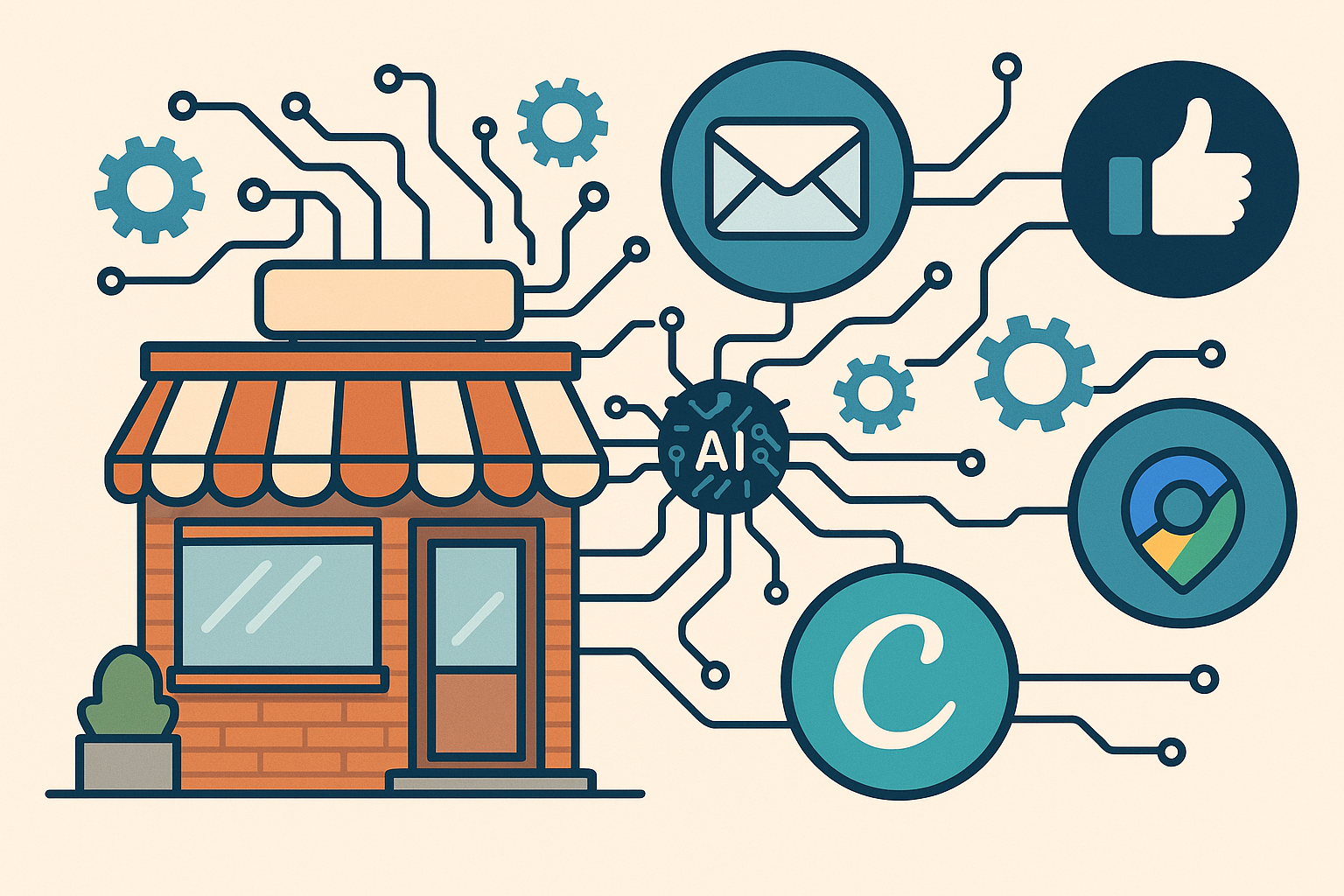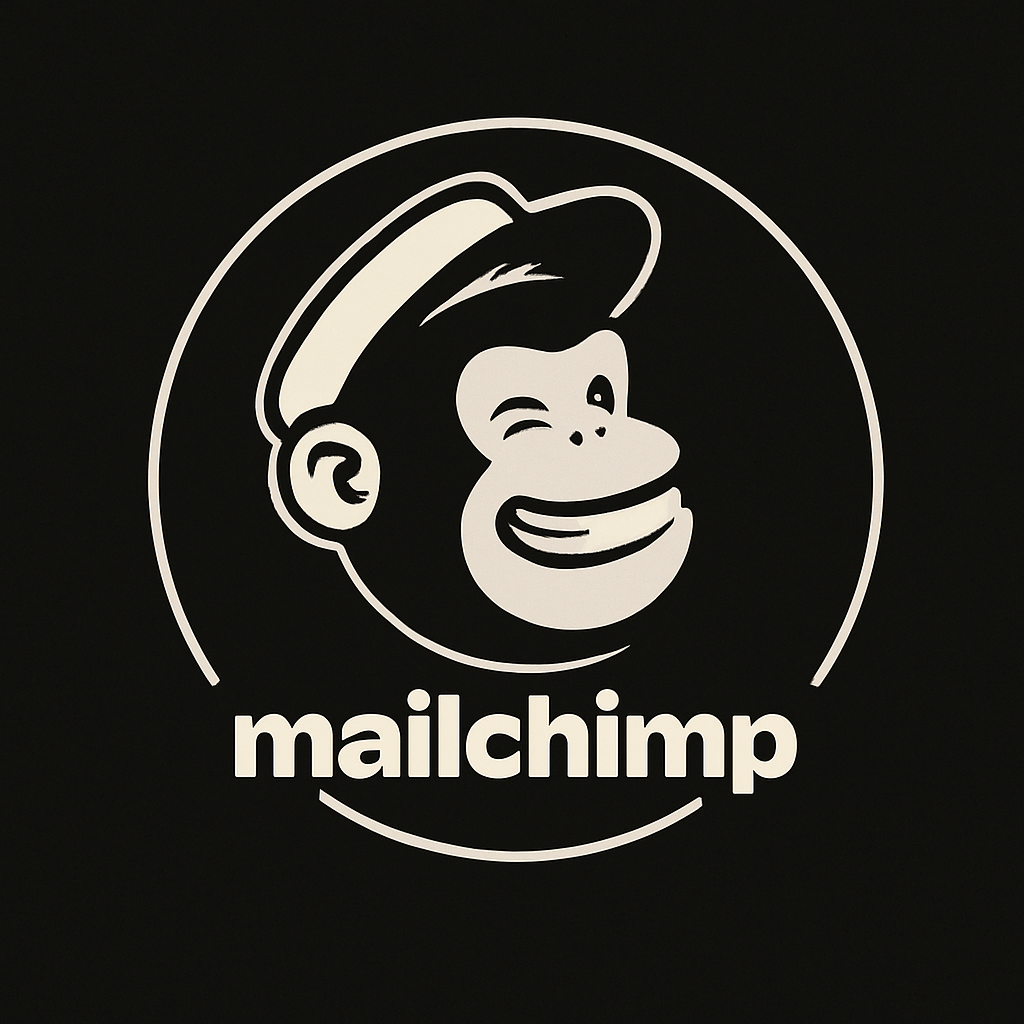Building Your Own Automated Marketing System with Agentic AI for Denver Small Businesses in 2025
Discover how Denver small businesses can leverage agentic AI to automate their marketing efforts. This guide walks you through setting up essential platforms like Mailchimp, Buffer, Canva, and Google My Business, laying the groundwork for a smarter, more efficient marketing system in 2025.
Welcome to the first post in our series on agentic AI for Denver small businesses! I’m Benjamin Blair, a 20+ year marketing veteran who’s passionate about helping local businesses thrive. Today, we’ll set up profiles on key platforms to prepare for automated marketing with agentic AI. Don’t worry—you can absolutely handle these steps yourself, even if you’re new to tech. Let’s get started!
Why Start Here?
Setting up profiles on the right platforms is the foundation for automating your marketing. These accounts will later connect to agentic AI tools that handle tasks like scheduling and personalization, saving you time while growing your Denver business.
The Platforms You’ll Need
We’ll use four free tools that are perfect for small businesses and ready for AI integration:
Mailchimp: For email marketing with AI-driven features.
Buffer: To schedule social media posts across platforms.
Canva: For creating visuals with AI assistance.
Google My Business (GMB): To boost your local presence in Denver.
You can set up all these profiles in under an hour—let’s walk through the steps together.
Step-by-Step Setup Guide
1. Mailchimp (Email Marketing)
Mailchimp’s free plan lets you manage contacts and send emails with AI help (e.g., optimizing send times). Here’s how to start:
Go to mailchimp.com and sign up with your email (e.g., yourbusiness@gmail.com).
Create a list called “Denver Customers” and add a few contacts (e.g., from your phone).
You can set this up in 10 minutes—I promise you’ve got this!
Buffer is a super handy social media management tool designed to help individuals, creators, and small businesses streamline their online presence. With Buffer, you can schedule posts across various platforms like Instagram, Facebook, LinkedIn, X (formerly Twitter), Pinterest, Threads, and even YouTube.
2. Buffer (Social Media Scheduling)
Buffer lets you schedule posts for up to 3 social accounts (e.g., X, LinkedIn, Instagram). It also has AI to suggest post times.
Visit buffer.com and sign up for the free plan.
Connect your social accounts (e.g., your X handle @yourbusiness).
Schedule your first post (e.g., “Excited to grow my Denver business!”).
You’re capable of this—it’s quick and straightforward!
3. Canva (Content Creation)
Canva’s free plan includes AI tools like Magic Design to create stunning graphics for your posts.
Head to canva.com and create a free account.
Search for “Social Media Post” and use the AI to generate a design (e.g., “Denver Sale!”).
Download your design—you can do this easily in minutes!
4. Google My Business (Local SEO)
Google My Business helps Denver customers find you, with AI insights to improve your profile.
Go to business.google.com and claim your business.
Add your Denver address, hours, and phone number.
You’ve got this—it’s a simple way to boost local visibility!
Download Detailed Guides
Need more help? I’ve created detailed guides for each platform, with step-by-step instructions to ensure you succeed. Download them below:
These guides walk you through every click, so you can set up with confidence.
What’s Next?
Now that your profiles are ready, our next post will show you how to connect these platforms to agentic AI for automation—think automated emails, scheduled posts, and more! Stay tuned for the rest of the series, and let me know how this setup goes for you in the comments or on LinkedIn.
Let’s keep growing your Denver business together!
Stop Guessing: Using AI to Sharpen Your Audience Targeting
Stop Guessing: Using AI to Sharpen Your Audience Targeting
You’re not “bad at ads”—you’re just aiming at the wrong people.
Topics:
AI tools for persona refinement (LLMs, behavioral modeling)
Lookalike vs. predictive audiences
Building adaptive targeting systems
CTA: Book a consult to map your actual customer journey
It’s not that you are bad at ads, it isn’t your creative team that is failing. No matter how good the ad is, if it is aimed at the wrong people it will be ineffective and inconsistent.
The real reason your ads aren’t working
It’s not your creative, it’s not your offer, it’s not your “call to action.” Most importantly, it probably isn’t your budget either. Chasing that solution gets really expensive, really fast!
The main reason your marketing isn’t converting and your cost of acquisition is so high…the wrong people are engaging with it.
You’re targeting the wrong people—or most likely, and even worse, you are relying on outdated personas built on assumption and targeted based on gut feelings.
The modern digital landscape does not reward guesswork. It rewards precision, and the most powerful tool for getting precise is AI.
From Static Personas to Dynamic Models
The traditional marketing personas we have all been using for decades are similar to cardboard cut outs of people. They are flat, rigid, and worst of all generic.
“Stacey S, 35, soccer mom, married, homeowner, shops online”
“Jeremy F, 28, tech savvy, gym membership, college graduate”
These types are targeting personas don’t work for consistent results. Real people are way more complex than a simple persona and a binary yes or no from a list of interest, and your targeting has to reflect that complexity.
With LLMs you can simulate real buyer behaviors, generate nuanced customer journeys that adjust in real time based on actions, and stress test your messaging from thousands of different directions in minutes. Combine that with behavioral modeling and first-party data, and you have a living, evolving understanding of your actual audience.
Lookalike Audiences VS Predictive Targeting
I have built some massive campaigns in my career and have seen a ton of success with lookalike audiences. They were really great…10 years ago.
The way lookalikes work is by cloning past customers that have converted via your marketing, the problems arise when you have any changes at all in your product, you value proposition, your funnel, or basically anything else. You can end up chasing shadows and burning budgets very quickly.
Predictive Targeting, or predictive audiences generated by artificial intelligence flip that script. Instead of mirroring the past, it gives us the ability to forecast who is most likely to convert based on real time intent signals, evolving engagement data, and in the moment psychographics.
The platforms we are all using like Facebook and Google are dabbling in this technology, but layering in your own tools, ie., SparkToro for intent or Clearbit for enrichment, you gain targeting that adapts with your market, not months behind it.
Building adaptive targeting systems
Good marketers don’t “set it and forget it,” they build systems that actually evolve and learn.
Using the right AI tools you can:
Ingest performance data and update audience segments automatically
Run message simulations to see how different groups are most likely to react
Cluster intent signals to personalize campaigns even before launch
Instead of a one size fits all campaign and generic targeting, you can create a living ecosystem where every customized audience member gets what they need to hear when they are most ready to hear it.
Are you ready to see what AI-Powered Targeting actually looks like?
If you are still guessing who your audience is, you are basically burning cash. Let’s map your actual customer journey, identify your targeting blind spots, and set you up with an adaptive system designed to evolve with your market.







